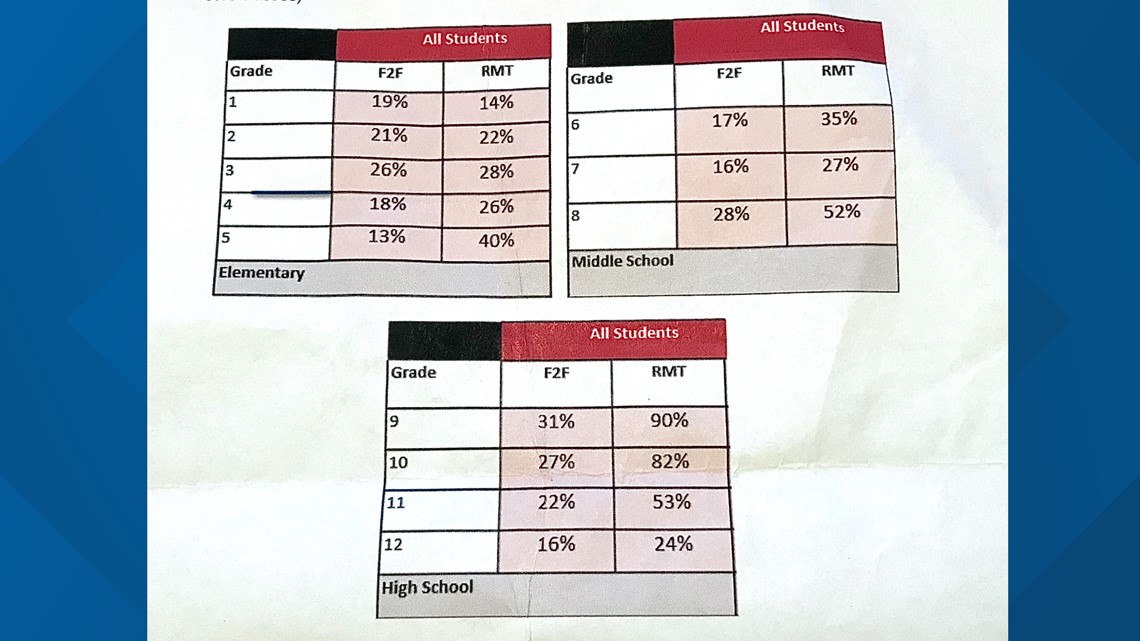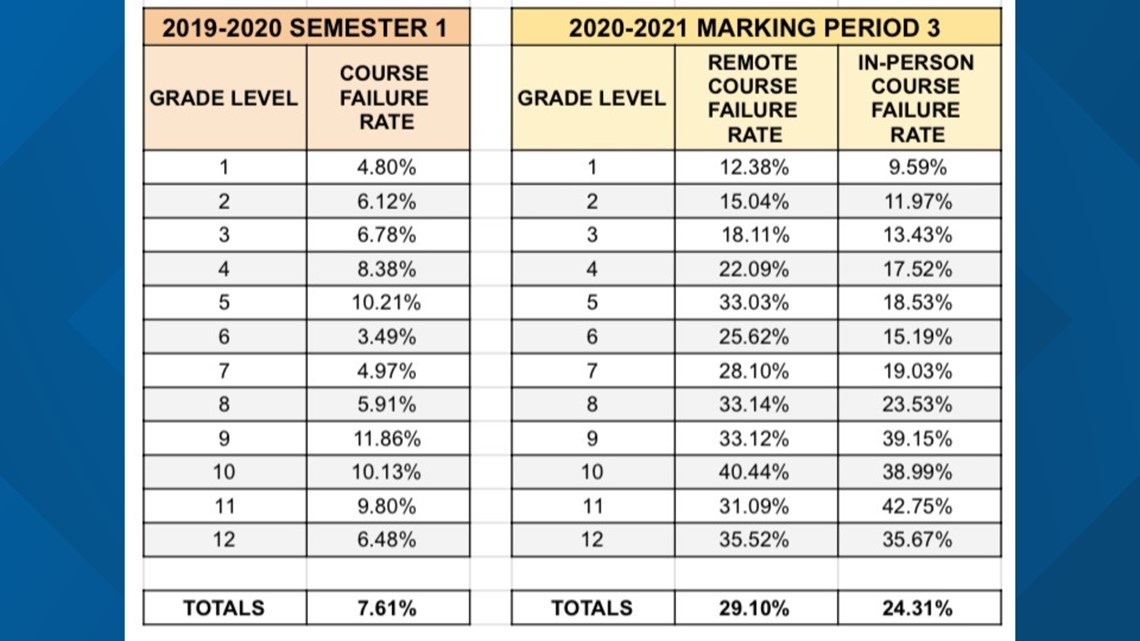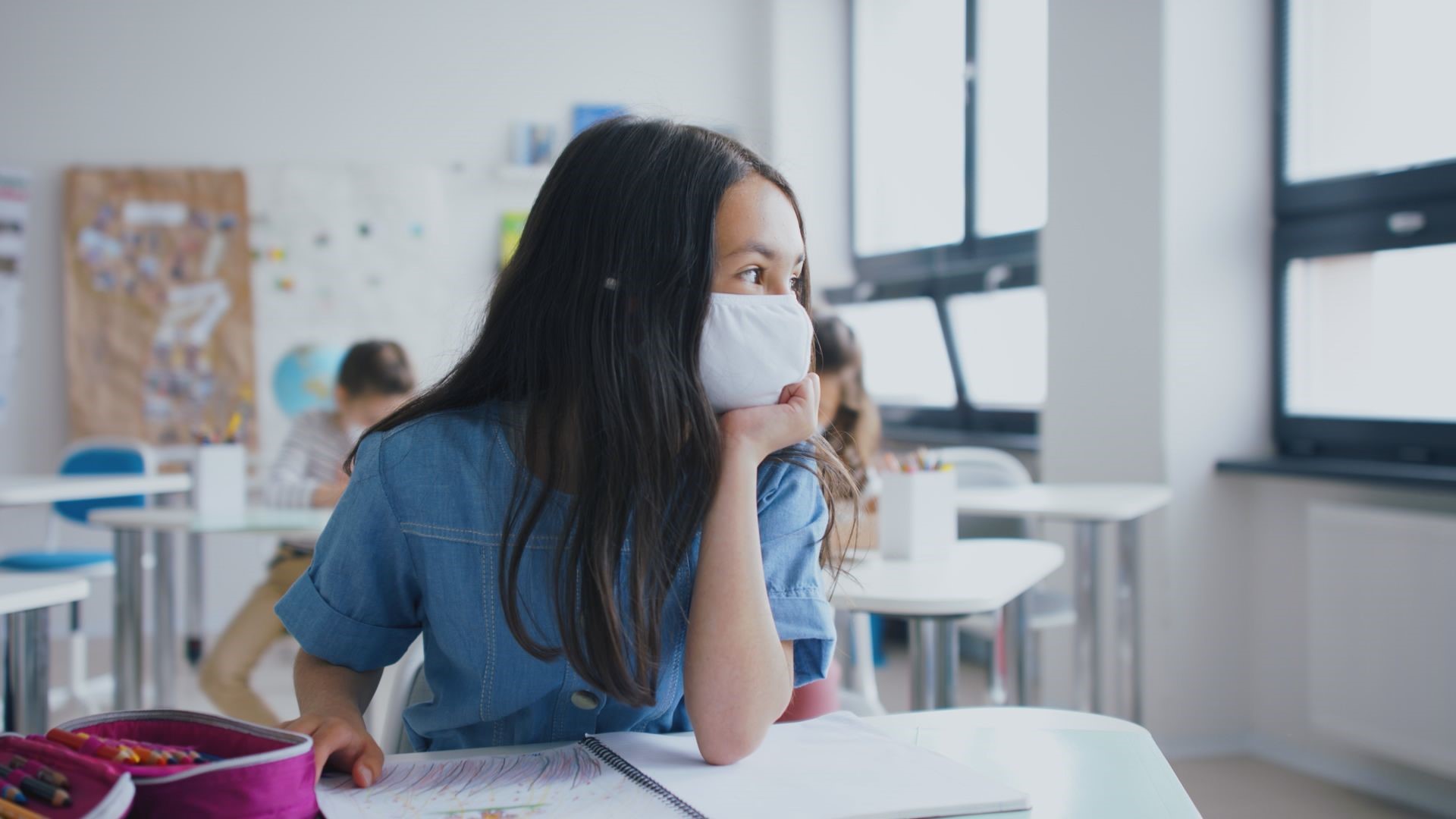TEMPLE, Texas — The COVID-19 pandemic dramatically changed the lives of students and teachers. The biggest change was missing school for several months. Then it went to some switching from learning in a classroom to a screen at home.
"Everything was turned upside down. It was very disruptive, we weren't able to roll things out as smoothly as we would have wanted to," Dr. Susan Kincannon said, the superintendent at Waco ISD.
"To be honest with you, it was chaotic in here for me but I knew that outward I had to be very calm," Dr. Bobby Ott said, the superintendent at Temple ISD.
These local superintendents mentioned there are always challenges in public education but there's no doubt the pandemic brought a lot of unknowns to the table.
Nearly 93% of people in households with school-age children reported some form of remote learning, according to the U.S. Census Bureau.
Kincannon with Waco ISD said her biggest concern with remote learning was how much students would miss and how things would change when they returned.
"This was very disruptive to the rhythm of what happens in public schools, and so we basically had to re-create everything that we do overnight," Kincannon recalled.
As guidelines from the CDC, the state and TEA evolved, Ott said they just tried to keep their approach simple.
"We had to center around two or three things and just get behind that and try to give people hope and some level of a plan," Ott said.
Local school data shows a gap between face-to-face instruction vs. remote learning.
The failure rates for fall of 2020, just for eighth grade show a big difference.
In Temple, 52% of remote learners failed one or more core classes compared to 28% in-person.
In Killeen, it's 49 % compared to 27%.
In Waco, their course failure rates for the last grading period of the fall semester show 33% remote learners compared to 23% in-person.
School administrators said they're not sure how long it's gonna take to fill those gaps.
Killeen ISD:
The tables below show Killeen ISD Fall semester 2020 percentage of students who failed one or more core classes face to face vs. remote learning by grade. This data only looks at failure rates for core content subjects, not electives, for the fall.


Temple ISD:
The tables show Temple ISD Fall semester 2020 percentage of students who failed one or more core classes face to face vs. remote learning by grade.


Waco ISD:
The orange table shows course failure rates for the first semester of the 2019-2020 school year by grade level. The yellow chart covers course failure rates for the third six-week grading period of 2020-2021 by grade level for remote and in-person instruction.


"When we had gaps identified with remote learners, it never closed at all, it widened and so that tells me that under traditional circumstances it could take two to four years, maybe even longer depending if they are a child with disabilities to get students up with grade level peers." Ott said.
"We know there are some gaps. We did some extensive study on that in February and March and presented that to our board of trustees. We know our students and our achievement is down from where it might normally be," Kincannon said.
Both Kincannon and Ott agree that parents losing jobs, the deaths of loved ones and remote learning all took a toll not only on the students' academic achievement but also on their mental and emotional health.
"Those effects are going to be felt for several years," Ott mentioned.
While both school districts will continue to implement technology in their classrooms, Ott and Kincannon admit remote learning was not a success.
"Wholesale online learning does not work in public education. There are students that are not self-directed learners, there are subjects that are just not conducive to online learning," Ott said.
"We'll continue to use technology in instruction in a big way, however, I think you'll see that in the school building versus at home. Remote instruction has not been highly effective and we know that our kids perform better when they're in the buildings with us." Kincannon said.
For now, school districts are taking the lessons learned this past year and setting plans in place to get students caught up.
"We're gonna do everything we can to make sure they stay on track academically that we close those gaps," Ott said.
"We're kind of ready to get back to business, we want to catch up and launch forward," Kincannon said.
They said they're thankful to teachers for all their hard work and parents for their patience during this unprecedented school year.

